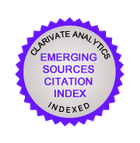DEVELOPMENT OF OXIDATION-RESISTANT BIOLOGICALLY ACTIVE FOOD SUPPLEMENTS BASED ON FLAXSEED OIL
Abstract
The effects of a number of vitamins and other biologically active substances (BAS) (α-tocopherol, α-tocopherol acetate, cholecalciferol, β-carotene, lutein, zeaxanthin, coenzyme Q10 and selenomethionine) on oxidation stability of flaxseed oil depending on concentration and compositions of the supplements were studied. For this purpose kinetic regularities data on accumulation of primary and secondary oxidation products, free fatty acids and BAS consumption during storage of flaxseed oil with additives was obtained. It has been shown that substances used to enrich the flaxseed oil, can show both antioxidant and prooxidant properties depending on their structure and concentration. The combined effect of the BAS and a number of synthetic and natural inhibitors on the oxidation stability of flaxseed oil for providing antioxidant protection of enriched oil was studied. Efficient and safe stabilizers for the BAS-enriched flaxseed oil were obtained, allowing to significantly inhibit the oxidation and oxidative degradation, reduce the BAS loss and therefore increase the oil shelf life. Based on the obtained data, formulations and production technologies of new oxidation-resistant biologically active food supplements (BAFS) based on flaxseed oil were developed, and manufacture of the supplements was arranged. This will allow to expand the assortment of available for a wide range of consumers products based on flaxseed oil; will improve the nutrition quality due to increase of polyunsaturated fatty acids (PUFAs) omega-3 level, vitamins and other valuable bioactive substances, and will contribute to health improvement of the population in Belarus.
About the Authors
O. I. ShadyroBelarus
D.Sc. (Chemistry), Professor
A. A. Sosnovskaya
Belarus
Ph.D. (Chemistry)
I. P. Edimecheva
Belarus
Ph.D. (Chemistry)
References
1. Connor W.E. Importance of n-3 fatty acids in health and disease. American Journal of Clinical Nutrition, 2000, vol. 71, no. 1, pp. 171S–175S.
2. Simopoulos A.P. The importance of the ratio of omega-6/omega-3 essential fatty acids. Biomedicine & Pharmacotherapy, 2002, vol. 56, no. 8, pp. 365–379. doi: 10.1016/s0753-3322(02)00253-6.
3. Thompson L.U., Cunnane S.C. (eds.) Flaxseed in human nutrition. 2th ed. Champaign, AOCS Press, 2003. 458 p.
4. Pan A., Chen M., Chowdhury R., Wu J.H., Sun Q., Campos H., Mozaffarian D., Hu F.B. α-Linolenic acid and risk of cardiovascular disease: a systematic review and meta-analysis. American Journal of Clinical Nutrition, 2012, vol. 96, no. 6, pp. 1262–1273. doi: 10.3945/ajcn.112.044040.
5. Halliwell B., Gutteridge J.M.C. Free radicals in biology and medicine. Oxford, Oxford Univesity Press, 2007. 851 p.
6. Schultz T.W., Yarbrough J.W. Trends in structure-toxicity relationships for carbonyl-containing α,β-unsaturated compounds. SAR and QSAR in Environmental Research, 2004, vol. 15, no. 2, pp. 139–146. doi: 10.1080/10629360410001665839.
7. Wanasundara P.K.J.P.D., Shahidi F. Antioxidants: science, technology, and applications. Bailey’s industrial oil and fat products. 6th ed. Hoboken, 2005, vol. 1, pp. 431–489. doi: 10.1002/047167849x.bio002.
8. Choe E., Vin D.B. Mechanisms and factors for edible oil oxidation. Comprehensive Reviews in Food Science and Food Safety, 2006, vol. 5, no. 4, pp. 169–186. doi:10.1111/j.1541-4337.2006.00009.x.
9. Quinn P.J., Fabisiak J.P., Kagan V.E. Expansion of antioxidant function of vitamin E by coenzyme Q. Biofactors, 1999, vol. 9, no. 2–4, pp. 149–154. doi: 10.1002/biof.5520090209.
10. Storozhok N.M., Kutuzova I.V. Issledovanie sovmestnogo antioksidantnogo deystviya β-karotina i vitamina A s α-tokoferolom [Study of the combined antioxidant effect of β-carotene and vitamin A with α-tocopherol]. Khimikofarmatsevticheskiy zhurnal [Chemical-Pharmaceutical Journal], 1995, no. 12, pp. 37–41. (In Russian).
11. Cooke M.S., Evans M.D., Mistry N., Lunec J. Role of dietary antioxidants in the prevention of in vivo oxidative DNA damage. Nutrition Research Reviews, 2002, vol. 15, no. 1, pp. 19–41. doi: 10.1079/nrr200132.
12. Vitaminy – tseliteli [Vitamins – healers]. Minsk, Paradox Publ., 2003. 445 p. (In Russian).
13. Brenneisen P., Steinbrenner H., Sies H. Selenium, oxidative stress, and health aspects. Molecular Aspects of Medicine, 2005, vol. 26, no. 4–5, pp. 256–267. doi: 10.1016/j.mam.2005.07.004.
14. Whitehead A.J., Mares J.A., Danis R.P. Macular pigment: a review of current knowledge. Archives of Ophthalmology, 2006, vol. 124, no. 7, pp. 1038–1045. doi: 10.1001/archopht.124.7.1038.
15. Ernster L., Dallner G. Biochemical, physiological and medical aspects of ubiquinone function. Biochimica et Biophysica Acta, 1995, vol. 1271, no. 1, pp. 195–204. doi: 10.1016/0925-4439(95)00028-3.
16. Holick M.F. Vitamin D: importance in the prevention of cancers, type 1 diabetes, heart disease, and osteoporosis. American Journal of Clinical Nutrition, 2004, vol. 79, no. 3, pp. 362–371.
17. Lee J.H., Ozcelik B., Min D.B. Electron donation mechanisms of β-carotene as a free radical scavenger. Journal of Food Science, 2003, vol. 68, no. 3, pp. 861–865. doi: 10.1111/j.1365-2621.2003.tb08256.x.
18. Burton G.W., Ingold K.U. β-сarotene: an unusual type of lipid antioxidant. Science, 1984, vol. 224, no. 4649, pp. 569– 573. doi: 10.1126/science.6710156.
19. Iannone A., Rota C., Bergamini S., Tomasi A., Canfield L.M. Antioxidant activity of carotenoids: an electron-spin resonance study on β-carotene and lutein interaction with free radicals generated in a chemical system. Journal of Biochemical and Molecular Toxicology, 1998, vol. 12, no. 5, pp. 299–304. doi: 10.1002/(sici)1099-0461(1998)12:53.0.co;2-g.
20. Kamal-Eldin A., Appelqvist L.A. The chemistry and antioxidant properties of tocopherols and tocotrienols. Lipids, 1996, vol. 31, no. 7, pp. 671–701. doi: 10.1007/bf02522884.
21. Elisia I., Young J.W., Yuan Y.V., Kitts D.D. Association between tocopherol isoform composition and lipid oxidation in selected multiple edible oils. Food Research International, 2013, vol. 52, no. 2, pp. 508–514. doi: 10.1016/j. foodres.2013.02.013.
22. Guseva D.A., Prozorovskaya N.N., Rusina I.F., Ipatova O.M. Antiradikal’naya aktivnost’ i ustoychivost’ k okisli-tel’nym izmeneniyam l’nyanogo masla, obogashchennogo antioksidantami [Antiradical activity and resistance of flaxseed oil, enriched with the antioxidants to oxidative changes]. Biomeditsinskaya khimiya [Biomedical Chemistry], 2008, vol. 54, no. 6, pp. 671–678. (In Russian).
23. Buxiang S., Fukuhara M. Effect of co-administration of butylated hydroxyanisole and flavonoide on the activation of mutagens and drug-metabolising enzymes in mice. Toxicology, 1997, vol. 122, no. 1–2, pp. 61–72. doi: 10.1016/s0300-483x(97)00078-4.
24. Nakatani N. Phenolic antioxidants from herbs and spices. BioFactors, 2000, vol. 13, no. 1–4, pp. 141–146. doi: 10.1002/biof.5520130123.
25. Frankel E.N. Antioxidants in lipid foods and their impact on food quality. Food Chemistry, 1996, vol. 57, no. 1, pp. 51–55. doi: 10.1016/0308-8146(96)00067-2.



































